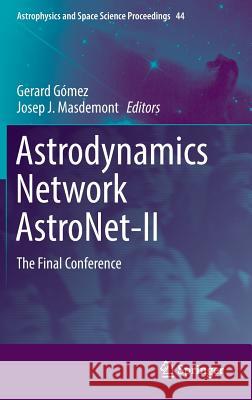Astrodynamics Network Astronet-II: The Final Conference » książka
topmenu
Astrodynamics Network Astronet-II: The Final Conference
ISBN-13: 9783319239842 / Angielski / Twarda / 2016 / 325 str.
Kategorie BISAC:
Wydawca:
Springer
Seria wydawnicza:
Język:
Angielski
ISBN-13:
9783319239842
Rok wydania:
2016
Wydanie:
2016
Numer serii:
000337475
Ilość stron:
325
Waga:
6.39 kg
Wymiary:
23.5 x 15.5
Oprawa:
Twarda
Wolumenów:
01
Dodatkowe informacje:
Wydanie ilustrowane











